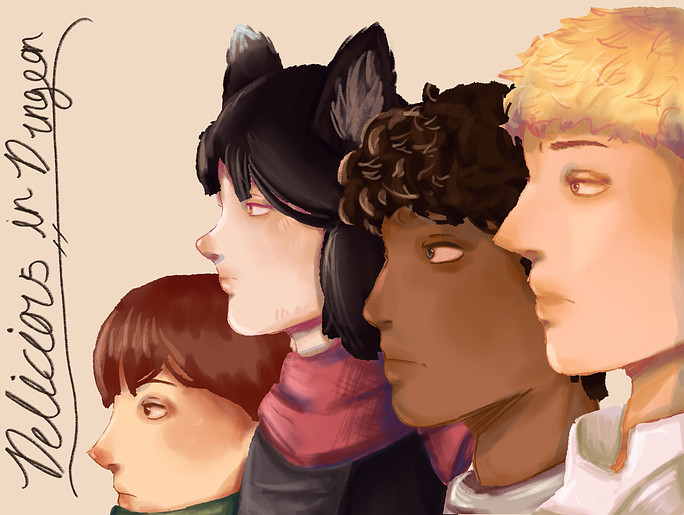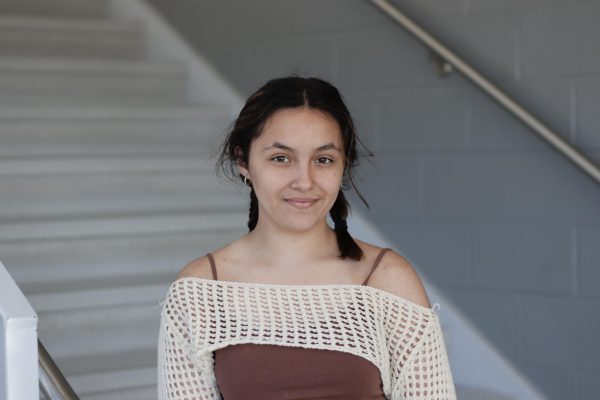Anime has a problem. It is not a big problem, but it is noticeable. Anime fans are also a part of this problem. The problem is that there needs to be better diversity in anime. Japan is an incredibly diverse country, which Hayao Miyazaki showcased in Princess Mononoke using inspiration from the indigenous groups of Japan. But mainstream anime and anime fans have a problem when it comes to diversity in anime, either ignoring that more people live in Japan than the stereotype or being surprised by the fact the whole world does not look like anime characters.
‘Dungeon Meshi’ or ‘Delicious in Dungeon’ breaks this cycle by showcasing a variety of character races (fictional and real), body types, and even heights. Ryoko Kui combines her amazing art abilities with her incredible understanding of people. You can see it in the first episode with the four characters that are introduced: Laios, Marcille, Chilchuk, and Senshi. All four of these characters are vastly different in appearance making the anime a breath of fresh air.
Eastern Asian countries such as Japan or South Korea are no strangers to insanely hard-to-achieve beauty standards. The common Japanese beauty standard is pale flawless skin, a petite figure, slim legs, and a quiet submissive personality. Of course, these are not the hardest things to achieve, but they are unreasonable to how a normal person should look and act, especially after seeing the photo filters used in Japan. Because of this standard, in anime typically, the most popular female characters are the ones who are almost child-like and submissive.
For example, Historia is an incredibly strong and well-written character in Attack On Titan who is both a soldier and queen of an entire country. Many fans, though, have looked past her well-written story and just noticed that she looks younger than she is and find that appealing. Gross, I know. But Delicious in Dungeon does not let that ever be an opportunity. Of course, fans will be weird but Kui tries to make them have more personality over looks.
Marcille has a pretty standard look for an anime character specifically a fantasy anime character with long blonde hair, blue eyes, and slimmer body type. But her personality and how powerful she is as a character shine more than how she looks. Even non-human or not fully human characters like Itzutsumi or Kuro are still diverse, which Ryoko did not have to do but she did it anyway. There is a variety of different breeds of this anthropomorphized dog character and it is weirdly wholesome to see someone put this much effort in even a non-human race.
Kabru is an amazing example of how manga illustrators and animation studios can make darker-skinned characters attractive and brightly colored. But besides having amazingly diverse depictions of skin tones and races, Ryoko also does an amazing job with different body types. In anime, the plus-size characters are usually used as comedic gags or not seen as real characters. Generally in media, plus-size characters are not used as important characters and are mostly there to make the main character look good.
Ryoko disputes this idea and you see it in the dynamic between Senshi and Laios. Senshi is a plus-size character but that is never used as a joke, even if his character is centered around food. Lots of plus-size characters are centered around food because what else would identify their character? Senshi breaks this because his character is not obsessed with food, he is just interested in cooking. He cooks using monster parts and finds new recipes for them while in the dungeon.
Laios on the other hand, is obsessed with Senshi’s cooking but again, it is not used as a joke about his body. This is not the norm but that is okay, you can have foodie characters without making judgments about their bodies. Delicious in Dungeon does the bare minimum, but since it is so rare, it makes a huge difference.
Out of all of these, height is something that many artists like to experiment with. Many artists, including myself, unconsciously make their characters around the same height. It is not because they hate tall or short people, just because it is easier to keep track of. Ryoko does not follow this and makes a variety of vastly different heights and even shows how their POV differs from the others. When the story is through Chilchuk’s POV, you only see the waists of most characters since Chilchuk is significantly shorter than the rest.
It seems like something you should already know about but many do not apply this to their stories. Since again, it is easier to keep them all at one point of view since perspective is incredibly hard to master. But even simple things like looking over the other character’s heads make the story so much more interesting and immersive.
Delicious in Dungeon is a great example of artistry and what happens when you want to learn from others. Manga artists and Japanese artists are insanely talented and we could learn from their styles. However, Japanese artists would also get better learning from other artists because diversity in art style always creates better art.






Bokus • May 6, 2024 at 3:19 am
Cyborg 009 did a pretty good job in the diversity department a few years ago.
Karl Carlson • May 5, 2024 at 2:02 pm
Both the headline and the article are outright condescending. So much so it can only described as xenophobic and racist towards Japan.
Ever since anime as we know it came into existence in the late 1940s, it has always been the most diverse medium of animation in the world and remains that way to this very day.
As for racial diversity, many examples can be found throughout every single decade. Cyborg 009 from the 1960s is one major example!
Instead of publishing hitpieces, how about doing some proper research for starters.
Shin Akimoto • May 5, 2024 at 1:36 pm
There has been diversity in anime since forever. Dragonball had it since the late 1980s, and Super Dimensional Fortress Macross since the earl 1980s, featured an interracial romance between a white man and black woman, both in important roles. The Macross sequel series Macross Plus in the 1990s did the same and had interracial characters. In manga, there was a series called Cyborg 009, which ran from 1964-1967, where two of the other Cyborgs, Cyborg 005 and Cyborg 008 were black. That series was retold an as an anime in 2001.This is just a small sample.